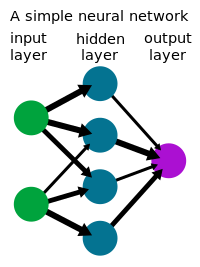
Photo from wikipedia
The watersheds of the Quindío River in Colombia South America have high levels of contamination by total suspended solids (TSS). The objective of this work was to represent the entire… Click to show full abstract
The watersheds of the Quindío River in Colombia South America have high levels of contamination by total suspended solids (TSS). The objective of this work was to represent the entire hydrographic network of the watersheds of the Quindío department by means of a graph and, using network theory, analyze the different centrality measures to identify areas most prone to TSS contamination. Similarly, partial differential equations were used to simulate the transport of TSS pollutants between specific points of the basin. For this purpose, a network of 409 nodes and 408 edges was created based on topographic maps and reports from the corporations in charge of preserving these watersheds. With information on contamination zones, the network, and partial differential equations, TSS transport was calculated throughout the hydrological network, identifying eight critical zones with high levels of this parameter. Some of these zones are on major rivers, such as the Quindío River near the city of Armenia; the Roble, Espejo, and San Juan rivers also have considerable levels.
Journal Title: River Research and Applications
Year Published: 2021
Link to full text (if available)
Share on Social Media: Sign Up to like & get
recommendations!